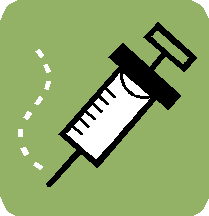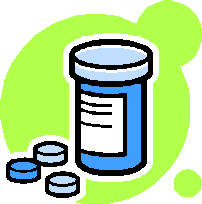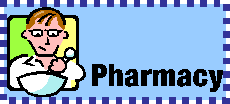DOH Medicaid Update May 2005 Vol. 20, No. 6
Office of Medicaid Management
DOH Medicaid Update
May 2005 Vol.20, No. 6
State of New York
George E. Pataki, Governor
Department of Health
Antonia C. Novello, M.D., M.P.H., Dr. P.H.
Commissioner
Medicaid Update
is a monthly publication of the
New York State Department of Health,
Office of Medicaid Management,
14th Floor, Room 1466,
Corning Tower, Albany,
New York 12237
Table of Contents
eMedNY: Electronic Remittance Advice Transactions 820 & 835
eMedNY: Prior Approval Rosters on eMedNY eXchange
eMedNY: Pended Claim Data for Transactions 820 & 835
Aranesp Products Not Included in Article 28 Rates
Traumatic Brain Injury Services: Rate Increases
Managed Care Enrollee Pharmacy Co-Payments Inadvertently Deducted
Physician Reimbursement for Intrauterine Devices
Presumptive Eligibility For Pregnant Women: Documentation Requirements
Enteral Products Classification List
Coalitions for the Prevention and Control of Diabetes
Practitioner Arthritis Information: Five Things Your Patient is Not Telling You
Provider Training Seminars
Provider Services
eMedNY
Update
All Providers!
Phase II Transition Plan
Ends June 20
Return to Table of Contents
Providers are encouraged to begin using the new Phase II paper claim forms as soon as possible.
The old forms will no longer be accepted after May 31, 2005.
If you need a supply of new paper claim forms, contact Provider Services at (800) 343-9000.
Providers who are using the Transition Plan for Phase II by continuing to send electronic claims to MMIS in pre-Phase II formats must migrate to eMedNY Phase II prior to June 20, 2005.
When the Transition Plan ends on June 20, several changes will affect providers immediately:
- claims will no longer be accepted in the 80-byte blocked format (claims must be submitted as Streamed Data);
- claims will no longer be accepted on magnetic media (tape, diskette and cartridge); and
- the MMIS Electronic Gateway will be shut down.
Providers using these methods to submit claims will need to switch to:
- ePACES,
- eMedNY eXchange,
- FTP, or
- the eMedNY Bulletin Board.
Be aware, however, that if you select the eMedNY Bulletin Board, this option will become obsolete in the future, and you will need to make another change when this occurs.
With the end of the Transition Plan on June 20, other changes will occur (which, like the eMedNY Bulletin Board, will affect providers later, rather than sooner). For example:
The Locator Code Field has been expanded to three positions. While a project has been developed in eMedNY to allow providers to continue submitting two-digit locator codes, eventually all providers will need to expand this field to three positions.
The same is true for Prior Approval/Prior Authorization numbers. While these are eleven-digit fields in eMedNY, providers may continue to submit the eight-digit version until the prior approval/prior authorization expires or the units are exhausted. However, providers must be prepared to handle eleven-digit approval/authorization numbers when assigned by eMedNY in the future.
The June issue of the Medicaid Update will provide more information on current and future eMedNY changes. You may also refer to the Medicaid Update Special Edition on eMedNY that was sent to all providers in March.
If you have any questions, please visit http://www.emedny.org or please contact CSC Provider Services at 800-343-9000.
Electronic Remittances
Return to Table of Contents
Many providers have already signed up for electronic remittances on eMedNY. These remittances are available over eXchange or FTP.
eMedNY creates electronic remittances in an 835 format for health care payments; or 820 format, for managed care payments.
If you have questions about these formats, visit http://www.nyhipaadesk.com
If you haven't already signed up for electronic remittances, and wish to do so, visit http://www.nyhipaadesk.com click on the "News & Resources" tab, and look for "Attention: Receivers of Electronic Remittances" for instructions.
When completing the application for an electronic remittance, the following information is required and must be written legibly on the application form:
- the ETIN (formerly known as TSN),
- assigned user identification number, and
- your choice of eXchange or FTP.
The form cannot be processed until a user identification number has been assigned by eMedNY. A provider identification number or a list of provider identification numbers is also required.
Please note: For practitioners billing with a group practice identification number, only the group provider identification number(s) is required. The individual provider identification numbers are only required if the billing is being submitted with no group identification number.
A separate electronic remittance will be created for each ETIN/Provider combination.
If you have any questions about signing up for electronic remittances, please contact Provider Enrollment at 800-343-9000 (select option 5).
eMedNY
Update
All Providers!
Prior Approval Rosters
Available on eMedNY eXchange
Return to Table of Contents
Providers who submit Prior Approval (PA) requests on ePACES will be able to access their final determinations over ePACES. Others will be notified of PA determinations by eMedNY eXchange messages or by mail.
If you wish to receive PA Rosters on eXchange and do not already have an eXchange account, go to http://www.edmeny.org to sign up.
Once you have an eXchange account, complete the request for PA Rosters on eXchange, which is available on http://www.emedny.org
Go to 'Information", ''eMedNY Phase II", then ''Phase II News", and look for "Changes Affecting Prior Approvals/Prior Authorizations".
If you have any questions, please contact CSC Provider Services at 800-343-9000, (select option 5).
eMedNY
Update
All Providers!
835 and 820 Supplemental Companion Guide
Updates for eMedNY Phase II
Pended Claim Data
Return to Table of Contents
Pended claim data is NOT reported on the 835 Transaction:

- The 835 Supplemental Transaction will contain claim detail pended data in a format similar to the former proprietary remittance.
- This file will be automatically transmitted to trading partners when applicable.
Pended claim data is NOT reported on the 820 Transaction:
- Managed care plans will receive supplementary proprietary information that will provide pended and denied claim detail in a format similar to the former proprietary remittances.
- This file will be automatically transmitted to trading partners when applicable.
Please note that there are changes to the format of both of these files that are different from Phase I.
Many data element sizes have changed and therefore the file format has changed.
Please review the Companion Guide carefully on http://www.nyhipaadesk.com for details.
NURSING HOMES
AND PHARMACY
PROVIDERS
Aranesp Products Not Included
in Article 28 Rates
Return to Table of Contents
Effective June 1, 2005, the following products will be added to the list of drugs which are not included within the cost components of Article 28 Nursing Facility Rates:

| Drug | Dosage | NDC# |
| Aranesp | 100 mcg/0.5 ml syringe | 55513004104 |
| Aranesp | 150 mcg/0.3 ml syringe | 55513004301 |
| Aranesp | 150 mcg/0.3 ml syringe | 55513004304 |
| Aranesp | 200 mcg/0.4 ml syringe | 55513004401 |
| Aranesp | 300 mcg/0.6 ml syringe | 55513004601 |
| Aranesp | 500 mcg/1 ml syringe | 55513004801 |
| Aranesp | 150 mcg/0.75 ml via | 55513005401 |
| Aranesp | 150 mcg/0.75 ml via | 55513005404 |
| Aranesp | 25 mcg/0.42 ml syringe | 55513005801 |
| Aranesp | 25 mcg/0.42 ml syringe | 55513005804 |
| Aranesp | 25 mcg/ml vial | 55513001001 |
| Aranesp | 25 mcg/ml vial | 55513001004 |
| Aranesp | 40 mcg/ml vial | 55513001101 |
| Aranesp | 40 mcg/ml vial | 55513001104 |
| Aranesp | 60 mcg/ml vial | 55513001201 |
| Aranesp | 60 mcg/ml vial | 55513001204 |
| Aranesp | 100 mcg/ml vial | 55513001301 |
| Aranesp | 100 mcg/ml vial | 55513001304 |
| Aranesp | 200 mcg/ml vial | 55513001401 |
| Aranesp | 200 mcg/ml vial | 55513001404 |
| Aranesp | 300 mcg/ml vial | 55513001501 |
| Aranesp | 40 mcg/0.4 ml syringe | 55513003701 |
| Aranesp | 40 mcg/0.4 ml syringe | 55513003704 |
| Aranesp | 60 mcg/0.3 ml syringe | 55513003901 |
| Aranesp | 60 mcg/0.3 ml syringe | 55513003904 |
| Aranesp | 100 mcg/0.5 ml syringe | 55513004101 |

Reminder
Effective January 1, 2006, all pharmacy products will be excluded from nursing home rates for dual eligible (Medicaid and Medicare) recipients.
Traumatic Brain Injury Waiver Services
Rate Increases
Return to Table of Contents
The Department of Health is pleased to announce an increase in certain rates for the Home and Community-Based Services Medicaid Waiver for Individuals with Traumatic Brain Injury (HCBS/TBI), Category of Service 0263, effective April 1, 2004:
Service Coordination Initial (Rate Code 9850):
- Effective April 1, 2004, from $464 to $478.
Service Coordination Monthly (Rate Code 9851):
- Effective April 1, 2004, from $340 to $350 a month.
Home and Community Support Services (Rate Code 9863):
- Effective April 1, 2004, from $15.45 to $17.70 per hour.
These changes are retroactive to April 1, 2004. Checks reflecting the retroactive payment will be sent to providers.
Service Coordinators should incorporate these rate increases in new Service Plans.
For further information, please contact Marcia Anderson, Bureau of Long Term Care, Office of Medicaid Management, at 518-474-6580.

PHARMACY CO-PAYMENTS
INADVERTENTLY COLLECTED
FROM MANAGED CARE RECIPIENTS
PRIOR TO APRIL 1, 2005
Return to Table of Contents
For the last few days during March 2005, co-payments were inadvertently deducted from pharmacy provider payments for Medicaid managed care recipients.
These recipients were exempt from co-payments until April 1, 2005.
Providers who had co-payments deducted in error will receive a retroactive adjustment in a future check. Providers who collected co-payments from managed care recipients prior to April 1 must refund those amounts to recipients.
If you have any questions, please contact the Bureau of Policy Development and Agency Relations at (518) 473-2160.
Physician Reimbursement
for Intrauterine Devices
Return to Table of Contents

Medicaid reimbursement for intrauterine devices (IUDs) furnished by practitioners to their patients is based on the acquisition cost to the practitioner.
Effective for dates of service on or after April 1, 2005, an invoice is not required to be submitted with the claim. Therefore, an IUD can now be billed electronically.
Practitioners are required to keep auditable records of the actual itemized invoice cost of the IUD.
The CPT codes for IUDs are:
- J7300; and
- J7302.
If you have any questions, please contact the Bureau of Policy Development and Agency Relations at (518) 473-2160.
Documentation Requirements:
Presumptive Eligibility for Pregnant Women
Return to Table of Contents
This article clarifies documentation requirements for Presumptive Eligibility for Pregnant Women.
Presumptive eligibility begins with the date on which a qualified provider determines, on the basis of preliminary information, that the household income of the pregnant woman does not exceed 200% of the Federal Poverty Level.
The sole requirement for establishing presumptive eligibility is:
Submission of the Medicaid Presumptive Eligibility for Pregnant Woman Screening Checklist (LDSS-4150), which serves as medical verification of pregnancy, and the woman's verbal statement of her household income.
Verification of identity and residence is not required!
This policy applies only to presumptive eligibility. When local departments of social services determine full eligibility, all documentation requirements must be met.
The only instance in which the pregnant applicant seeking presumptive eligibility should document identity and residence is when a local department of social services is taking a courtesy application; i.e., the woman's primary residence is different from the county in which presumptive eligibility is being determined by a qualified provider.
If you have any questions or concerns, please call (518) 486-6562.
ENTERAL PRODUCTS CLASSIFICATION LIST
Return to Table of Contents
The following list of enteral formulae is provided as a guideline for prescribers and dispensers:
This is not an all-inclusive list, but is meant to assist providers in prescribing and determining the correct item code for billing.
For products not listed below, providers are to use their judgment in selecting the appropriate product classification based upon the prescriber's order, general categorical descriptions, and Medicaid coverage criteria see December 2002 Medicaid Update for coverage criteria)
Powdered, liquid, fiber-added, calcium-added and high protein forms of the same formula are billed under the same code.
Special metabolic formulas categorized under B4157 should be billed under B2162 if prescriber for a pediatric patient.
Italicized products are subject to coverage by the Women', Infant and Children (WIC) program.
| Product | Code |
| 80056 | B4155 |
| Acerflex | B4162 |
| Accupepha | B4153 |
| Advantage 10+ | B4150 |
| Advantage 60+ | B4150 |
| Advera | B4154 |
| Alimentum | B4161 |
| Alitraq | B4153 |
| Amin-Aid | B4154 |
| Analog formulas | B4162 |
| Apple Fiber | B9998 |
| Aquasol E | B9998 |
| ATMF | B4150 |
| ATMF Diabetic | B4154 |
| ATMF High Cal 2.0 | B4152 |
| ATMF Pediatric | B4158 |
| ATMF Renal | B4154 |
| ATMF Renal 2.0 | B4154 |
| ATMF Trauma | B4154 |
| Attain | B4150 |
| BCAD-1 | B4162 |
| BCAD-2 | B4157 |
| Bio-care | B4150 |
| Boost | B4150 |
| Boost Plus | B4152 |
| Boost Pudding | B4150 |
| Calcilo XD | B4162 |
| Calories Plus | B4152 |
| CIB Lactose Free | B4150 |
| CIB Lactose Free Plus | B4152 |
| CIB Lactose Free VHC | B4152 |
| Casec | B4155 |
| Choice DM | B4154 |
| Compleat | B4149 |
| Compleat Pediatric | B4149 |
| Comply | B4152 |
| Complex MSUD AA Blend | B4155 |
| Complex MSUD Drink Mix | B4155 |
| Criticare-HN | B4153 |
| Crucial | B4153 |
| Cyclinex-1 | B4162 |
| Cyclinex-2 | B4157 |
| Deliver 2.0 | B4152 |
| Diabetisource AC | B4154 |
| Doucal | B4155 |
| Egg/Pro Powder | B4155 |
| EleCare | B4161 |
| Elemental 028 Extra | B4154 |
| Enfamil AR | B9998 |
| Enriched Antioxident Formula | B4155 |
| Ensure | B4150 |
| Ensure Plus | B4152 |
| Ensure Pudding | B4150 |
| Enteralife HN | B4150 |
| Enteralife HN-2 | B4150 |
| Entrition HN | B4150 |
| Epulor | B4155 |
| Essential AA | B4155 |
| Essential Pro Plus | B4155 |
| Essential Protein | B4155 |
| Fibersource | B4150 |
| Fibersource HN | B4150 |
| Flavonex | B9998 |
| Forta Drink | B4150 |
| Forta Shake | B4150 |
| Fortison | B4150 |
| Gevral Protein | B4155 |
| Glucerna | B4154 |
| Glucerna Select | B4154 |
| Glucerna Shake | B4154 |
| Gluco-Pro | B4154 |
| Glutamine-Plain | B4155 |
| Glutamine Rapid Release | B4155 |
| Glutapak-10 | B4155 |
| Glutarex-1 | B4162 |
| Glutarex-2 | B4157 |
| Glutasolve | B4155 |
| Glutasorb | B4153 |
| Glytrol | B4154 |
| Good Start Soy | B4159 |
| Good Start 2 Soy | B4159 |
| HCU Express | B4155 |
| HCU Gel | B4154 |
| Hepatic-Aid Powder | B4154 |
| Hominex-1 | B4162 |
| Hominex-2 | B4157 |
| HOM 1 | B4155 |
| HOM 2 | B4155 |
| HPF Plus | B4155 |
| Immulife | B4155 |
| Immun-Aid | B4154 |
| Immune System Booster | B4155 |
| Immunocal | B4155 |
| Immu-Plus | B4155 |
| Impact | B4154 |
| Impact 1.5 | B4154 |
| Impact Glutamine | B4153 |
| Impact Recover | B4154 |
| IntensiCal | B4153 |
| Introlite | B4150 |
| Isocal | B4150 |
| Isocal HN | B4150 |
| Isocal-HN Plus | B4150 |
| Isocal II | B4150 |
| Isomil | B4159 |
| Isosource | B4150 |
| Isosource 1.5 | B4152 |
| Isosource-HN | B4150 |
| Isotein VHN | B4154 |
| I-Valex-1 | B4162 |
| I-Valex-2 | B4157 |
| Jevity 1 Cal | B4150 |
| Jevity 1.2 Cal | B4150 |
| Jevity 1.5 Cal | B4152 |
| Juven | B4155 |
| KetoCal | B4154 |
| Ketonex 1 | B4162 |
| Ketonex 2 | B4157 |
| Kindercal | B4158 |
| LactAid Tablets | B9998 |
| Lactofree | B4158 |
| L-Emental Amino Acid | B4155 |
| L-Emental | B4153 |
| L-Emental Hepatic | B4154 |
| L-Emental Pediatric | B4161 |
| Lipisorb | B4154 |
| Lipomul | B4155 |
| Lofenelac | B4154 |
| Lonalac | B4150 |
| Lophlex | B4154 |
| Lorenzo Oil | B4154 |
| LPS 15/30 | B4155 |
| Magnacal Renal | B4154 |
| Maxamaid formulas | B4162 |
| Maxamum formulas | B4157 |
| MCT Oil | B4155 |
| Microlipid | B4155 |
| Moducal | B4155 |
| Modulen IBD | B4154 |
| MSUD Diet | B4162 |
| MSUD Express | B4155 |
| MSUD Gel | B4154 |
| MSUD-1 | B4154 |
| MSOD-2 | B4154 |
| Naturite | B4150 |
| Naturite Plus | B4152 |
| Neocate | B4161 |
| Nepro | B4154 |
| Nestle Flavor Pkts | B9998 |
| Neutra-Phos | B9998 |
| Nitrolan | B4150 |
| NovaSource Pulmonary | B4154 |
| NovaSource Renal | B4154 |
| NovaSource 2.0 | B4152 |
| Nutri-Drink | B4150 |
| Nutramigen | B4161 |
| Nutrassist-1.5 | B4152 |
| Nutren Junior | B4158 |
| Nutren-1 | B4150 |
| Nutren-1.5 | B4152 |
| Nutren-2 | B4152 |
| Nutrifocus | B4154 |
| Nutriheal | B4150 |
| Nutrihep | B4154 |
| NutriRenal | B4154 |
| NutriVent | B4154 |
| NutriVir | B4155 |
| NutriVir NSA | B4155 |
| Optimental | B4153 |
| OS 1 | B4154 |
| OS 2 | B4154 |
| Osmolite 1.0 | B4150 |
| Osmolite 1.2 | B4150 |
| Osomolite 1.5 | B4152 |
| Pediatric E028 | B4161 |
| Pediasure | B4158 |
| Pepdite One+ | B4161 |
| Peptamen | B4153 |
| Peptamen 1.5 Diet | B4153 |
| Peptamen Jr | B4161 |
| Peptamen VHP | B4153 |
| Peptinex DT | B4153 |
| Peptical | B4153 |
| Perative | B4153 |
| Perative Powder | B4162 |
| PFD-2 | B4155 |
| Phenex 1 | B4162 |
| Phenex 2 | B4157 |
| PhenylAde Amino Acid | B4155 |
| PhenylAde Drink Mix | B4157 |
| PhenylAde MTE | B4155 |
| PhenylAde 40 | B4157 |
| Phlexy-Free 1 | B4162 |
| Phenyl-Free 2 | B4157 |
| Phenyl-Free 2HP | B4157 |
| Phlexy-10 Capsules | B4155 |
| Phlexy-10 Drink Mix | B4155 |
| PKU1 | B4154 |
| PKU2 | B4154 |
| PKU3 | B4154 |
| PKU Express | B4162 |
| PKU Gel | B4162 |
| Polycose | B4155 |
| Portagen | B4150 |
| Pregestimal | B4161 |
| ProBalance | B4150 |
| ProCel | B4155 |
| Product 3232A | B4161 |
| Profiber | B4150 |
| Promix | B4155 |
| ProMod | B4155 |
| Promote | B4150 |
| Propac | B4150 |
| Pro-Peptide | B4153 |
| Pro-Peptide for Kids | B4161 |
| Pro-Peptide VHN | B4153 |
| Pro-Phree | B4155 |
| Propimex 1 | B4162 |
| Propimex 2 | B4157 |
| ProSobee | B4159 |
| Pro-Stat 64 | B4155 |
| Pro-Stat 101 | B4155 |
| Pro-Stat 121 | B4155 |
| ProSure | B4150 |
| Protain XL | B4154 |
| ProViMin | B4155 |
| Pulmocare | B4154 |
| ReGain Plus | B4154 |
| Renalcal | B4154 |
| Re-Neph | B4154 |
| Re-Neph Free | B4154 |
| Replete | B4150 |
| Resource | B4150 |
| Resource Arginaid | B4155 |
| Resource Diabetic | B4154 |
| Resource for Kids | B4158 |
| Resource Glutasolve | B4155 |
| ReSource Instant Protein | B4155 |
| Resource Plus | B4152 |
| Resource Support | B4152 |
| Resource 2.0 | B4154 |
| Respalor | B4154 |
| Restore-X | B4155 |
| Resurgex | B4155 |
| Resurgex Plus | B4152 |
| Ross Carbohydrate Free | B4155 |
| Scandi Shake | B4152 |
| Similac PM 60/40 | B4154 |
| SoyPro | B4155 |
| Subdue | B4153 |
| Subdue Plus | B4153 |
| Sumacal | B4155 |
| Suplena | B4154 |
| Sustacal | B4150 |
| Sustacal Pudding | B4150 |
| Sustagen | B4150 |
| Sympt-X Glutamine | B4155 |
| Tarvil | B4154 |
| Tolerex | B4153 |
| Traumacal | B4154 |
| Traum-Aid HBC | B4154 |
| TwoCal-HN | B4152 |
| TYR Express | B4157 |
| Tyrex-1 | B4162 |
| Tyrex-2 | B4157 |
| TYROS 2 | B4157 |
| UCE-1 | B4162 |
| UCD-2 | B4157 |
| Ultracal | B4150 |
| Ultracal HN Plus | B4150 |
| Ultracare Kids | B4154 |
| Vari-Flavors | B9998 |
| Vitaflo Flavor Pkts | B9998 |
| Vital-HN | B4153 |
| Vitaneed | B4149 |
| Vivonex Flavor Pkts | B9998 |
| Vivonex Pediatric | B4161 |
| Vivonex Plus | B4153 |
| Vivonex RTF | B4153 |
| Vivonex-TEN | B4153 |
Mandatory Generic Drug Program Update
Return to Table of Contents

The New York State Medicaid Mandatory Generic Drug Program requires prior authorization for brand-name prescriptions with an A-rated generic equivalent.
When the FDA (the federal Food and Drug Administration) approves new generic drugs, Medicaid allows the equivalent brand-name drug to be dispensed for a period of six months, without prior authorization, to assure that there is an adequate supply of the new generic readily available.
The Medicaid program will begin posting brand-name drugs that meet this standard, and the effective date of the prior authorization requirement, in the Medicaid Update and on the Department's website.
This list of drugs is available at:
http://www.health.state.ny.us/health_care/medicaid/program/mandatory_generic/
scroll down to "Ongoing Maintenance".
Refills That Span This Date
Remaining refills of current prescriptions which were written prior to June 1, but are filled on or after June 1, 2005, will not require prior authorization. However, when a current prescription expires, a prior authorization will be required for the patient to continue to receive the brand-name drug.)
Remember! If you prescribe a generic drug, no prior authorization is necessary.
Questions regarding this article may be directed to the Pharmacy Policy and Operations staff at (518) 486-3209 or e-mail ppno@health.state.ny.us.
One New Yorker in twelve has diabetes, and about one-half of these are undiagnosed.
More than 12,000 of our school-age children are estimated to have a diagnosis of diabetes.
In an effort to respond to the increasing numbers of New Yorkers with diabetes, the Department of Health, with the assistance of the Center of Disease Control and Prevention, has once again funded a number of community coalitions. These coalitions provide a variety of services including:
- public education on diabetes awareness and prevention;
- practitioner education, patient self-management education programs;
- sponsorship of community functions for patients with diabetes; and
- risk assessment for diabetes.
These services, along with diabetes educational materials and other diabetes referrals and services may be obtained by contacting the Diabetes Coalitions listed below:
| Western NY Coalition for Diabetes Prevention/ Erie County Department of Health Counties served: Allegany, Cattaraugus, Chautauqua, Erie, Genesee, Niagara, Orleans, Wyoming (716) 858-7695 |
Diabetes Coalition of the Southern Tier Healthy Living Partnership/Broome County Department of Health Counties served: Broome, Chenango, Delaware, Tioga (607) 778-2802 |
Greater Capital Region Community Coalition for Diabetes Prevention Northeast Health Counties served: Albany, Columbia, Greene, Rensselaer, Schenectady (518) 447-3501 |
| Faxton-St. Lukes Healthcare Diabetes Education Program Counties served: Herkimer, Jefferson, Lewis, Oneida, Oswego, St. Lawrence (315) 624-5620 |
Seven Valleys Health Coalition Counties served: Cayuga, Cortland, Madison, Onondaga, Tompkins (607) 765-4198 |
Diabetes Action Program/Via Health and Rochester General Hospital Counties served: Livingston, Monroe (585) 922-4093 |
| Seven Counties Diabetes Network, Glens Falls Hospital Counties served: Clinton, Essex, Franklin, Hamilton, Saratoga, Warren, Washington (518) 926-5920 |
Otsego County Department of Health Counties served: Fulton, Montgomery, Otsego, Schoharie (607) 547-4230 |
Mid-Hudson/Catskill Community Coalition for Diabetes Prevention/Catskill Regional Medical Center Counties Served: Dutchess, Orange, Sullivan, Ulster (845) 794-3300 ext. 2074 |
| Diabetes Resource Coalition of Long Island, Cornell Cooperative Extension of Suffolk County Counties served: Nassau, Suffolk (631) 727-7850 |
St. Luke's-Roosevelt Center Counties served: Manhattan, Richmond (212) 523-5934 |
Community Advances in Nutrition for Diabetes Through Education and Empowerment (CANDEE) Mount Sinai School of Medicine Counties served: Manhattan, Richmond (212) 659-9567 |
| SUNY Downstate Medical Center Counties served: Kings (212) 270-1542 |
Pinnacle Healthcare, St. John's Riverside Hospital Counties served: Putnam, Rockland, Westchester (914) 741-6744 |
Institute for Urban Family Health Counties Served: Bronx, Queens (212) 633-0800 est.291 |
The Medicaid program reimburses for medically necessary care, services, and supplies for the diagnosis and treatment of diabetes. For more information, please contact the Bureau of Program Guidance at (518) 474-9219.
For more information on diabetes, please go the New York State Department of Health website at
http://www.health.state.ny.us/diseases/conditions/diabetes/index.htm
or call the Diabetes Control Program at (518) 474-1222.
Patient
Information
Arthritis
1. "How my weight, eating habits, and sleeping habits can impact my health."
Lifestyle greatly impacts the effects of arthritis or related diseases on your patient. Added pounds can increase pain by adding pressure to inflamed joints, causing or worsening osteoarthritis, and exacerbating rheumatoid arthritis and other forms of inflammation. Good nutrition and regular exercise help reduce pain and keep joints strong and flexible, in addition to helping manage their weight. Research is just beginning to unravel the links between pain, stress, sleep and immunity, but studies suggest these relationships are more complex and impact health more than previously believed. However, small lifestyle changes can make a difference -- one study found that as little as three hours of exercise over a six-week period improved joint function of people with arthritis or related diseases -- and it's never too late to start. One 2003 nutrition study suggested that a switch to better eating habits even late in life could make a difference in longevity and overall health.
What can you do?
Address lifestyle changes that your patient needs to make including problems with obesity, managing weight and sleeping habits. Ask them these specific questions to reassure them you are looking at the bigger picture. Your patient should leave with a specific how-to plan to improve their lifestyle.
2. '"My state of mind matters."
Patients are frequently reluctant or cannot make an accurate assessment of their own state of mind. Anywhere from 8% to 50% of people living with chronic pain currently have major depression. One study showed that 21% of patients met the criteria for depression but only 1% described their problems as depression. Chronic stress, often a precursor of depression symptoms, can increase chances of developing an inflammation-related condition and exacerbate pain. Early intervention for depression, as with many illnesses, is the key.
What can you do?
Many patients are uncomfortable bringing up emotional stress issues with their doctor. The often-asked question, "How are you feeling?" by the physician may only elicit a response of "Fine." Questions like: "How is everything with your family?", "How are things going on your job?", "Anything been bugging you lately?" may help to have the patient provide the physician with better information with which to make an accurate assessment.
3. "My need to know what to expect in the future."
Most people with arthritis and related diseases are concerned about the effect that the diseases will have on them in the long run. You may be reluctant to bring up bad-news scenarios, but knowing someone's risk factors and understanding what the long-range effects may be is invaluable information that people need to manage their arthritis. Exercise may help prevent loss of range-of-motion; weight loss may reduce pain. Cutting edge treatment may be helpful for the older patient.
What can you do?
Be honest with your patient about the prognosis and the risk factors to help them get a clearer picture of what life holds for them, and actions they can take to make their lives more comfortable. Patients often feel reluctant to ask these sort of questions of their doctor. Studies have found that doctor-patient communication is best when these factors are discussed.
4. "My medications may interact with each other."
Most rheumatologists are up-to-date on the details of arthritis and related disease medications and write so many prescriptions for them that it is second nature to them to know how these medications interact with drugs for other conditions. However, primary care doctors may not know the details of how these highly-specialized medications interact with other drugs or over-the-counter (OTC) medicines or supplements.
What can you do?
Rely on the pharmacist. Pharmacies are required by federal law and regulated by state enforcers to counsel people one-on-one about medications, and many also provide detailed information about interactions from OTC medicines and supplements as well as prescription medications with each prescription. In addition, tell your patient what to expect including how soon they can look for an improvement with a new medication, which side effects to be concerned about, and if there are any less expensive generic options available.
5. "Chronic pain is not a fact of life because of arthritis."
The myth that persistent, severe pain is just a natural part of aging and arthritis has been around for so long that it is no wonder many people believe the solution is simply increased stoicism. The truth is that pain is a symptom that the condition is not being adequately treated. You should ask your patient to rate their pain on a pain scale of 1 to 10. Some people leave themselves a margin -- the pain is bad, but it could always be worse. Others amplify more minor pains in the hopes that a higher number will make their doctor take their pain more seriously. You have to try to find a context for their pain, so that you can understand how seriously it is affecting them. If pain interferes with sleeping and activities of daily living (ADLs), there are things that can be done to help them manage and alleviate some of the discomfort.
What can you do?
Suggest that the patient keep a pain journal, describing their pain and the methods they use to soothe it. Ask them to share their record with you. This will help you make a better diagnosis of their pain and bolster the doctor-patient communication. By breaking down the barriers of silence, you can provide your patient with a healthier, happier life.
Article contents reprinted with the permission of the Arthritis Foundation.
eMedNY Phase II
Provider Training Seminars
Return to Table of Contents
Major enhancements were made to the Medicaid program on March 23, 2005 with the implementation of eMedNY (Phase II).
The new eMedNY claims processing system requires providers to make changes in the way
they submit transactions and transaction data to Medicaid.
eMedNY Phase II training seminars are being conducted by Outreach Representatives of Computer Sciences Corporation (CSC) at various locations statewide. These seminars are similar to seminars previously offered in January and February 2005.
The purpose of these seminars is to review and explain the specific Medicaid billing requirements, for both paper and electronic transactions, related to eMedNY implementation.
The seminar agenda includes:
- Overview of eMedNY Phase II
- Billing and remittance changes that apply to paper and electronic transactions
- Other eMedNY Phase II changes with impact on providers
- Questions and answers session
Seminar Schedule and Registration
Seminar locations and dates are available at the eMedNY website. Seminar registration is fast and easy.
Go to http://www.emedny.org and select "Training" to find and register for the eMedNY Phase II Training Seminar appropriate for your provider category and location.
If you are unable to access the internet to register, please contact CSC's Call Center at (800) 343-9000 to obtain a registration form.
CSC representatives look forward to meeting with you at upcoming seminars!
Your Provider Manual Is Going Online!
Return to Table of Contents

The Department is beginning to make provider manuals available on the internet at:
http://www.emedny.org/providermanuals/index.html
Manuals can be printed, and downloaded to your own computer!
Manuals are also available in hardcopy, upon request. Call Computer Sciences Corporation at (800) 343-9000

PROVIDER SERVICES
Return to Table of Contents
Missing Issues?
The Medicaid Update, now indexed by subject area, can be accessed online at the New York State Department of Health website:
http://www.health.state.ny.us/health_care/medicaid/program/main.htm
Hard copies can be obtained upon request by calling (518) 474-9219.
Would You Like Future Updates Emailed To You?
Email your request to our mailbox, MedicaidUpdate@health.state.ny.us
Let us know if you want to continue receiving the hard copy in the mail in addition to the emailed copy.
Do You Suspect Fraud?
If you suspect that a recipient or a provider has engaged in fraudulent activities, please call the fraud hotline at: 1-877-87FRAUD. Your call will remain confidential.
As a Pharmacist, Where Can I Access the List of Medicaid Reimbursable Drugs?
The list of Medicaid reimbursable drugs is available at: http://www.eMedNY.org/info/formfile.html
Questions About an Article?
For your convenience each article contains a contact number for further information, questions or comments.
Do You Want Information On Patient Educational Tools and Medicaid's Disease Management Initiatives?
Contact Department staff at (518) 474-9219.
Questions About HIPAA?
Please contact CSC Provider Services at (800) 343-9000.
Address Change?
Fee-for-Service, please contact CSC Provider Services at (800) 343-9000.
Rate Based, please contact the Bureau of Medical Review and Payment, Provider Enrollment Unit at (518) 474-8161.
Billing Question? Call Computer Sciences Corporation:
Provider Services (800) 343-9000.
Comments and Suggestions Regarding This Publication?
Please contact the editor, Timothy Perry-Coon at MedicaidUpdate@health.state.ny.us or via telephone at (518) 474-9219 with your concerns.
The Medicaid Update: Your Window Into The Medicaid Program
The State Department of Health welcomes your comments or suggestions regarding the Medicaid Update.
Please send suggestions to the editor, Timothy Perry-Coon:
NYS Department of Health
Office of Medicaid Management
Bureau of Program Guidance
99 Washington Ave., Suite 720
Albany, NY 12210
(e-mail MedicaidUpdate@health.state.ny.us)
The Medicaid Update, along with past issues of the Medicaid Update, can be accessed online at the New York State Department of Health web site: http://www.health.state.ny.us/health_care/medicaid/program/main.htm

